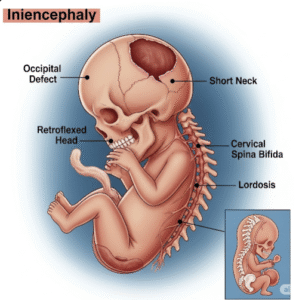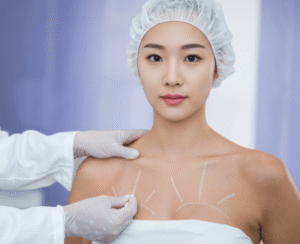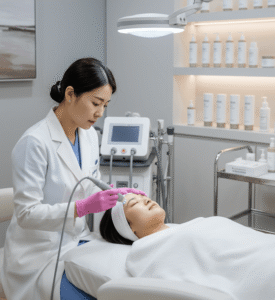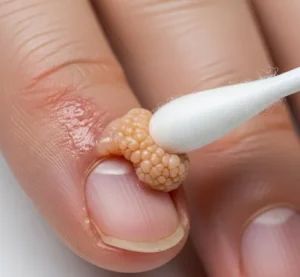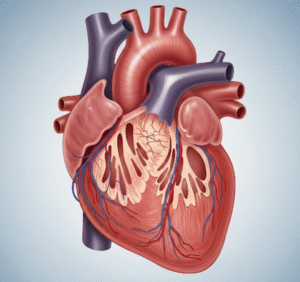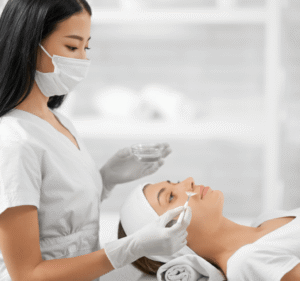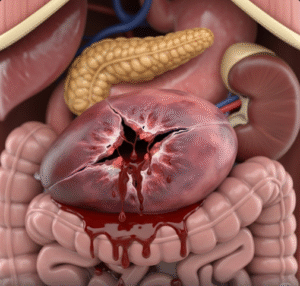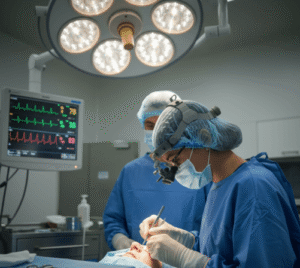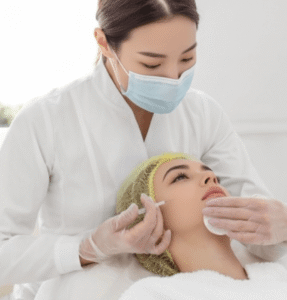What it is
➝ Cholestatic pruritus is a distressing itch that occurs when bile flow is impaired, leading to the accumulation of bile acids, endogenous opioids, and pruritogens in the body.
➝ It is seen in conditions such as primary biliary cholangitis (PBC), primary sclerosing cholangitis (PSC), intrahepatic cholestasis of pregnancy, viral hepatitis, and drug-induced cholestasis.
➝ The itch is typically worse at night, often generalized but especially intense on the palms and soles, and is independent of skin lesions.
➝ In Korea, dermatology plays a supportive role, working alongside hepatology and internal medicine to relieve symptoms, prevent skin complications, and improve quality of life.
Why it’s done
→ To provide symptomatic relief from severe itching, which often dominates the patient’s quality of life.
→ To prevent secondary skin damage: excoriations, lichenification, and infections caused by scratching.
→ To complement systemic therapy from hepatology by offering dermatologic interventions for comfort.
→ To support psychological well-being, since cholestatic itch is linked to insomnia, anxiety, and depression.
Alternatives / Systemic Treatments (Hepatology-Led)
→ Bile acid modulators: ursodeoxycholic acid, obeticholic acid.
→ Bile acid sequestrants: cholestyramine, colesevelam.
→ Opioid antagonists: naltrexone, naloxone infusion.
→ Serotonin reuptake inhibitors: sertraline.
→ Rifampicin: induces enzymes that metabolize pruritogens.
→ Plasmapheresis or liver transplant: for intractable cases.
Dermatology Supportive Measures
Topical therapies
→ Cooling emollients with menthol, pramoxine, or polidocanol to reduce skin discomfort.
→ Barrier creams to protect excoriated areas.
→ Antiseptic or antibiotic ointments if secondary infection occurs.
→ In Korea, cosmeceuticals with soothing botanicals and cooling agents are frequently used as adjuncts.
Phototherapy
→ Narrowband UVB can relieve itch in some patients, though less effective than systemic therapy.
→ Available in many Korean dermatology clinics as an adjunct option.
Neuromodulators
→ Gabapentin or pregabalin may be prescribed if itch has a neuropathic component.
Behavioral and lifestyle support
→ Cold compresses and cool showers.
→ Avoidance of heat, wool clothing, and excessive sweating.
→ Sleep hygiene measures to counter nighttime worsening.
→ In Korea, patients are often counseled through dermatology-hepatology combined clinics about daily itch management routines.
Preparation
→ Dermatology evaluates extent of skin damage from scratching.
→ Baseline photography is often used in Korea to monitor improvement.
→ Hepatology coordinates systemic treatment while dermatology manages skin comfort and secondary complications.
How it’s Done
→ Step 1: Confirm cholestatic origin (through hepatology tests).
→ Step 2: Start systemic therapy (bile acid sequestrants, rifampicin, naltrexone) under hepatology.
→ Step 3: Add dermatology supportive measures (cooling emollients, antipruritic creams).
→ Step 4: Consider phototherapy or gabapentinoids if systemic therapy alone is insufficient.
→ Step 5: Address excoriations with topical steroids or antibiotics as needed.
Recovery
→ With combined hepatology and dermatology care, many patients achieve partial to significant itch relief within weeks.
→ Skin lesions from scratching improve as itch is controlled.
→ Long-term relief depends on control of underlying liver disease.
→ In refractory cases, dermatology helps manage comfort until definitive hepatology treatment (transplant, biologics).
Complications
→ Severe excoriations leading to infection or scarring.
→ Psychological distress: insomnia, anxiety, depression.
→ Side effects from systemic treatments (rifampicin hepatotoxicity, naltrexone withdrawal-like symptoms).
→ Chronic pigmentary changes from scratching.
Treatment Options in Korea
→ Dermatology clinics in Korea frequently collaborate with hepatology departments for cholestatic pruritus management.
→ Menthol, polidocanol, and pramoxine creams are standard supportive agents.
→ NB-UVB phototherapy is offered in tertiary hospitals for resistant cases.
→ Korean dermatologists often add gabapentinoids for mixed neuropathic itch.
→ Psychodermatology services are increasingly available, addressing stress and sleep disturbance.
→ With Korea’s integrated liver–skin care model, dermatology provides key supportive relief, preventing complications and improving patient quality of life during systemic hepatology treatment.


